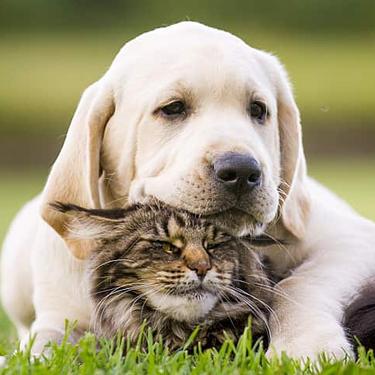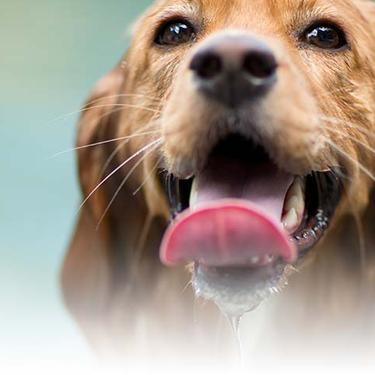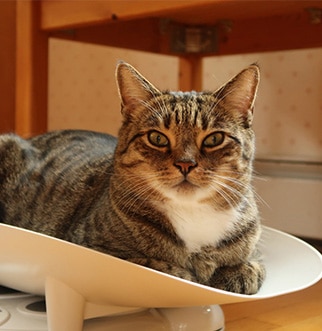
-
Find the right food for your petTake this quiz to see which food may be the best for your furry friend.Find the right food for your petTake this quiz to see which food may be the best for your furry friend.Featured products
 Hill's Science Diet Adult 7+ Senior Vitality Small & Mini Chicken & Rice Recipe Dog Food
Hill's Science Diet Adult 7+ Senior Vitality Small & Mini Chicken & Rice Recipe Dog FoodImproves everyday ability to get up & go
Shop Now Puppy Large Breed Chicken & Brown Rice Recipe
Puppy Large Breed Chicken & Brown Rice RecipeVital nutrients to support 5 essential building blocks for lifelong health
Shop Now Puppy Lamb Meal & Brown Rice Recipe
Puppy Lamb Meal & Brown Rice RecipeVital nutrients to support 5 essential building blocks for lifelong health
Shop NowFeatured products Adult Sensitive Stomach & Skin Cat Food
Adult Sensitive Stomach & Skin Cat FoodHighly digestible food that is gentle on the stomach. Nourishes skin & promotes lustrous fur.
Shop Now Adult Indoor Chicken Recipe Cat Food
Adult Indoor Chicken Recipe Cat FoodSupports energy level and beautiful fur in indoor cats
Shop Now Adult 7+ Chicken Recipe Cat Food
Adult 7+ Chicken Recipe Cat FoodSupports energy level and beautiful fur in mature cats
Shop Now -
Dog
- Dog Tips & Articles
-
Health Category
- Weight
- Food & Environmental Sensitivities
- Urinary
- Digestive
- Joint
- Kidney
-
Life Stage
- Puppy Nutrition
- Adult Nutrition
Cat- Cat Tips & Articles
-
Health Category
- Weight
- Skin & Food Sensitivities
- Urinary
- Digestive
- Kidney
-
Life Stage
- Adult Nutrition
Featured articles The Incredible Science Behind Your Pet's Microbiome
The Incredible Science Behind Your Pet's MicrobiomeLearn what a pet's microbiome is, how it contributes to your pet's gut & overall health, and why nutrition is important in maintaining healthy microbiomes.
Read More Pet Food Storage Tips
Pet Food Storage TipsDiscover how and where to store your dry, as well as canned, dog and cat food. Learn how to find the "best before" dates on all Hill's pet food packaging.
Read More Water
WaterDiscover why water is the most important nutrient for your dog or cat to live a healthy life. Find out how much water your pet should consume each day.
Read More -


As a pet parent, you know it's important to keep up with regular cat maintenance like combing her coat and brushing her teeth, but is trimming cat claws on your list? It should be!
In addition to keeping your furniture intact, there are other reasons that trimming your kitty's claws is important, such as reducing the hurt factor when she kneads you. "Taking off the very end of those claws will make this loving gesture something you can enjoy, rather than dread," explains Vetstreet. "For your cat, clipping her nails can prevent painful broken claws that can result when a sharp tip gets caught in the carpet." A good claw trim also cuts down on the "click, click, click" you hear when your kitty runs down the hall.
Ideally, start trimming claws when your feline friend is still a kitten. The biggest advantage for starting young, of course, is that your cat becomes used to it and doesn't go nuts when you take out the clippers.
Don't worry if your cat is older—you haven't missed the window of opportunity for giving your kitty a mani-pedi. She might be cranky about it, but it's worth a try.

What Tools You Need
You can purchase cat nail clippers at your local pet retail store or veterinarian's office. Another option is to use human baby clippers, particularly the ones with a bulbous handle for easy grasping.
First, familiarize your cat with her nail clippers. Petcha suggests placing the clippers near her so she can sniff them out. Reward her if she reacts calmly toward them. Then, "When she is familiarized with the clippers, touch her paws and toes with them, getting her used to having them around her paws." If she's comfortable around them, your cat will be less inclined to run and hide in small, dark spaces when you take out the clippers.
How to Trim Cat Claws & Proper Length
- Choose a small, safe spot that has a door and good lighting, like a bathroom or bedroom.
- Have your supplies ready ahead of time: clippers and treats for afterward to reward her for being such a good girl.
- Sit on the floor and hold her securely in your lap, belly-side up. Comfort her with some tummy rubs and soothing words. If your cat responds well to treats, you can give her one to help her relax.
- Using your thumb and forefinger, gently squeeze her paw so that the nails are extended.
- Clip the sharp tip of the claw in one quick motion.
When deciding how far to cut your cat's claws, do not cut too close to the "quick," which is the pink part of the claw that houses the blood vessels and nerve endings. Cutting the quick is what causes bleeding and pain. If you do cut the quick, the Princeton Veterinary Hospital advises to rub a small dab of cornstarch or flour on the claw and apply pressure to help clot and stop the bleeding. At this point, it's best to abandon the effort for the day and let your cat recover emotionally.


Tasty Tips
Tips for Trimming & What to Avoid
Don't wrap your kitty in a towel because she may become more agitated.
Don't aim to trim all four paws in one session. Try one paw a day until she's accustomed to the process. It's okay to clip only one claw at a time. VCA Hospitals points out, "The goal is for your pet to associate the handling of the feet and nail trimming with a pleasant outcome." Rewarding her good behavior instills in her a sense of pride and in you a sense of accomplishment.
When to Cut Your Losses
If the process is too upsetting, it's time to make an appointment with your vet or a reputable groomer. Your career of trimming cat claws may be over, but in the end, you have to do what's best for both you and your furry friend.


Christine O'Brien is a writer, mom, and long-time cat parent whose two Russian Blues rule the house. Her work also appears in Care.com, What to Expect, and Fit Pregnancy, where she writes about pets, pregnancy, and family life. Find and follow her on Instagram and Twitter @brovelliobrien.
Related products

Highly digestible food that is gentle on the stomach. Nourishes skin & promotes lustrous fur.

Supports energy level and beautiful fur in indoor cats

Supports energy level and beautiful fur in mature cats

Low calories for less active cats
Related articles

Discover how to identify cat sensitive skin and what you can do to help your cat thrive from head to paw.

What is the best food for an overweight cat? Learn all about weight control food for cats, including what's in it and how it works.

How do you get a cat to lose weight? Learn all about cat foods for weight loss, including how to choose weight control cat food and exercise tips.

What is the best food for an overweight cat? Learn all about weight control food for cats, including what's in it and how it works.

Put your cat on a diet without them knowing
Our low calorie formula helps you control your cat's weight. It's packed with high-quality protein for building lean muscles, and made with purposeful ingredients for a flavorful, nutritious meal. Clinically proven antioxidants, Vitamin C+E, help promote a healthy immune system.
Put your cat on a diet without them knowing
Our low calorie formula helps you control your cat's weight. It's packed with high-quality protein for building lean muscles, and made with purposeful ingredients for a flavorful, nutritious meal. Clinically proven antioxidants, Vitamin C+E, help promote a healthy immune system.

